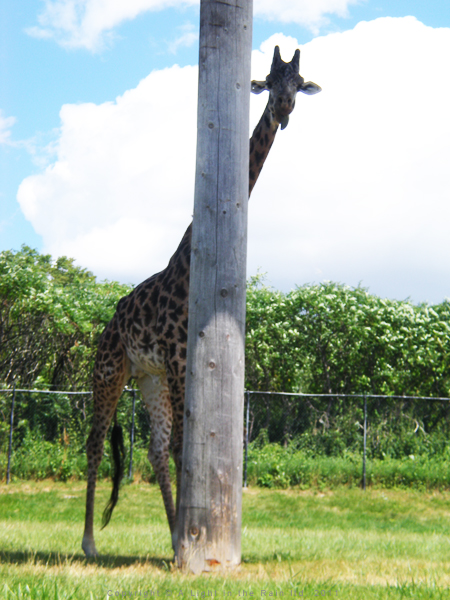
Want to know what’s in the above picture? Scroll down to find out!
Curiosity Based E-marketing
What is it?: Curiosity based E-marketing is a tactic that takes advantage of natural human curiosity in order to draw attention to your product or service.
Where it works best: The best time to use curiosity based tactics is when trying to attract potential customers to view your product or service, be it a website, social media page or blog. Therefore, using the tactic on website banners, social media advertisements, and similar mediums, tends to produce the best results.
How you can use it: When creating an advertisement such as a web banner or a Facebook advertisement, figure out who your target market is (who will be viewing the advertisements and who you suspect is most likely to want your product/service). Then determine what that group would be most curious about. For example, if you are selling educational services you might have a banner with a brain-teaser or puzzle and three multiple choice answers. Or, if you are selling travel services you might have a picture of a unique tourist attraction. Your goal is to create an advertisement that will pique people’s interest enough to get them to click your ad.
The result: If you succeed in creating an advertisement that piques people’s curiosity, they will visit your website regardless of their desire for your product/service (to satiate that curiosity). At this point you can use other neuromarketing tactics on your website in order to retain potential customers and generate purchases.
The Neuroscience:
Note: the neuroscience behind curiosity is complex and is actively being studied and expanded upon. This is an over-simplification for the purpose of gaining a basic understanding.
Curiosity is not just a human trait, but a basic emotion common to numerous animals including apes, cats, fish, reptiles and even insects. Simplistically it creates a desire to discover or clarify the unknown. A modern fMRI study at Cal Tech has shown that the striatum is linked to this desire [see: The Wick in the Candle of Learning]. The striatum (a part of the forebrain) can be split into 2 sections, one being known as the caudate nucleus. When individuals read questions, their level of curiosity is correlated with activity in the caudate. For example, this study demonstrated that when an individual has an incorrect answer corrected, there is brain activation in reward and memory-related regions. In other studies, neuroscientists noticed that the striatum lit up more just before getting an answer where the individual hoped to be rewarded, than it did after [see: Wired to Wonder]. Essentially what this means is that right when we think we can find out an answer, our brain (partly due to the striatum) pushes us to take risks and to pursue those answers. This is accomplished through neurochemical actions such as increased dopamine release.
The Cal Tech study suggests that if people are very curious about something (e.g. they don’t think they know the answer) they will go out of their way to find an answer. This may mean they invest more time, or spend resources they have that are limited, in an attempt to find the answer. Further the study shows that a small amount of knowledge piques curiosity. In other words, knowing a bit about something makes you more curious and increases your desire to know more. Other studies show that if you are personally invested in a curiosity (like a student finding out midterm grades) you will be more driven to find the answer and produce larger amounts of dopamine prior to arriving at that answer.
The Cal Tech study also suggests via experimentation, that if you pose a question someone is curious about and they guess wrong, learning the correct answer will stimulate enhanced memory retention. Knowing this, you could devise questions intended to elicit incorrect answers, then show a surprising correct answer which you would like potential customers to remember. To get potential customers to take part in these questions, presenting a small bit of knowledge beforehand may help. For example, let’s say a zoo wanted to advertise their new flamingo exhibit. they may have a rolling banner with facts on flamingos and then a multiple-choice question about a surprising fact such as “Flamingos are pink because? a: genetics, b: diet, c: the sun, d: spray paint” (the answer is b, they feed on brine shrimp and plankton which have carotenoid proteins that turn them pink).
While informative, much of this is oversimplified. Our brains are incredibly complex and neuroscientists still do not fully understand how they work. The reality is that curiosity is derived from numerous neurological processes, many of which we have not yet become aware of. Thus, we can’t just say that curiosity exists in the striatum. For example, curiosity often comes coupled with emotion, be it good or bad. And emotion is seemingly a result of entirely different networks of the brain. However, the basic understanding of curiosity that we discussed will allow you to reach more clients, generate more purchases, and increase your profits.
Sources Cited / Further Research:
The Wick in the Candle of Learning: Epistemic Curiosity Activated Reward Circuitry and Enhances Memory – Min Jeong Kang, Ming Hsu, Ian M. Krajbich et al, – http://papers.ssrn.com/sol3/papers.cfm?abstract_id=1308286
Wired to Wonder – Todd Kashdan – http://greatergood.berkeley.edu/article/item/wired_to_wonder/
Copyright A Light in the Rain Ltd. 2017
I’ts a Giraffe! From the Toronto Zoo

Did you scroll down before reading the post? Many people do. If so, you demonstrated the power of curiosity based e-marketing for yourself.




